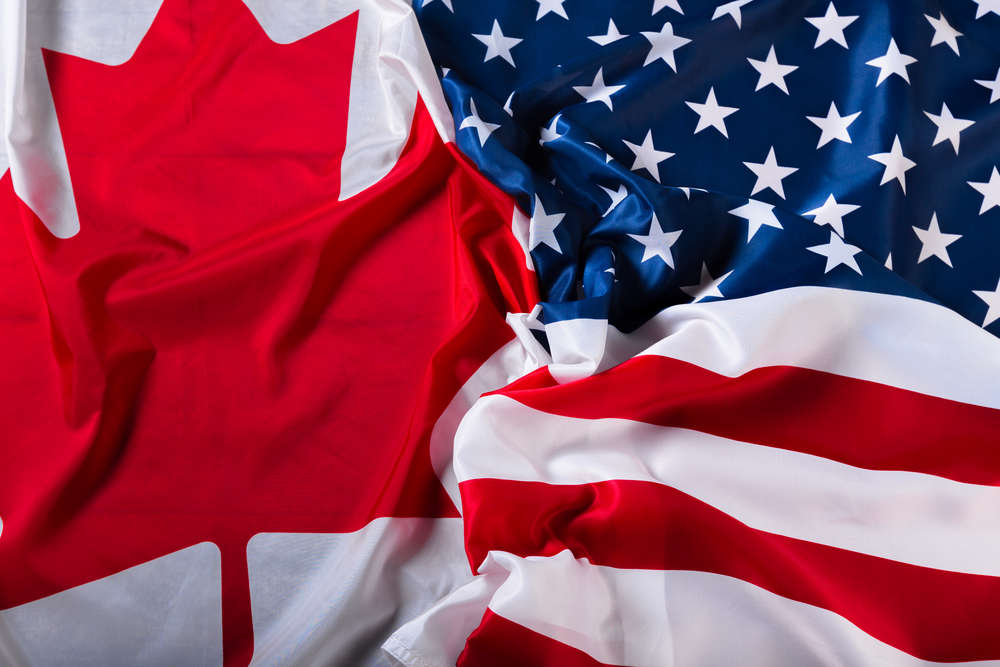
Thinking of hosting a wedding on the US/Canada border, well there may be some limitations to consider. In the middle of a global pandemic, it’s quite common for travel restrictions and changing governmental mandates to put a wrench in your plans. This is certainly true for wedding arrangements and even more so for plans that involve international travel. Whereas many couples have opted to go virtual for their nuptials, at least one couple has gone the distance of getting married on the Canada-United States border. With the border closed for non-essential travel, here’s what you should know about saying “I do” where the Great White North and the States meet.
Checking Your Reasons
Before you start making plans, you and your partner should decide if an in-person ceremony is what you really want to do. You also need to consider your motivations for doing so. Couple Karen Mahoney and Brian Ray decided to marry at the border because she really wanted her Canadian parents and her 96-year-old grandmother, her only living grandparent, to witness her nuptials in person. According to Mahoney, arrangements could’ve been made for air travel, but she thought the health risks, especially for her near-centenarian grandmother, were too great. Your wedding day is a high priority for you, your spouse-to-be and loved ones. The decision to not go virtual should be clear and carefully considered.
Remove Limitations and Get Permission
Securing a venue beforehand is a key requirement for any event. For a border wedding, you’ll need to make sure that you have permission to gather on both the Canadian and American sides. The Canadian-US border is over 5,500 miles and stands as the longest international border on the planet. There are many places where your union can possibly be solemnized, including Canada’s edge with the state of Alaska to the west. Some places are separated with fencing, while others are open and may or may not have markers. If you’re considering this type of ceremony, you’ll need to find out which places are public, private and willing to accommodate weddings.
The Peace Arch Park is an international park made up of the Canadian Peace Arch Provincial Park and the American Peace Arch Historical State Park. As such, the overall park straddles the border where Highway 99 in British Columbia and Interstate 5 in Washington state meet. This area was a very popular place for bi-national couples to get married, either with a ceremony on one side or two ceremonies, one on each side. Since the pandemic, the Canadian side has been closed but the American side has reportedly allowed Canadian visitors.
Understanding Limitations
You can best prepare for a border event by understanding your limitations. While you might be able to exchange vows nearly everywhere, you should prepare for the possibility that loved ones may only be able to watch. You may not be able to hug some family members and friends. Having a reception and breaking bread may not be allowed. For a successful ceremony, everyone must be clear about the boundaries, literally.
Prioritizing the Essentials
The typical marriage ceremony involves all the frills and features that the couple or their supporters are able to pay for. Recognize that with a border event, you’ll need to figure out the true essentials and make sure those are covered. For example, most marriage laws require the presence of an authorized officiant, two adult witnesses and a formal declaration of intent to marry. Regardless of your setup, make sure that these particular details are taken care of. Other traditional elements such as a ring bearer or flower girl or a fabulous white bridal gown should probably be reconsidered.
While there may be over 1000 ways to have a wedding, your options are significantly reduced in a pandemic. Virtual ceremonies are a go-to for many, but a ceremony at Canada’s border with the United States may be an option for bi-national couples. The good news is that it can be done, but extra planning and preparation are a must.


